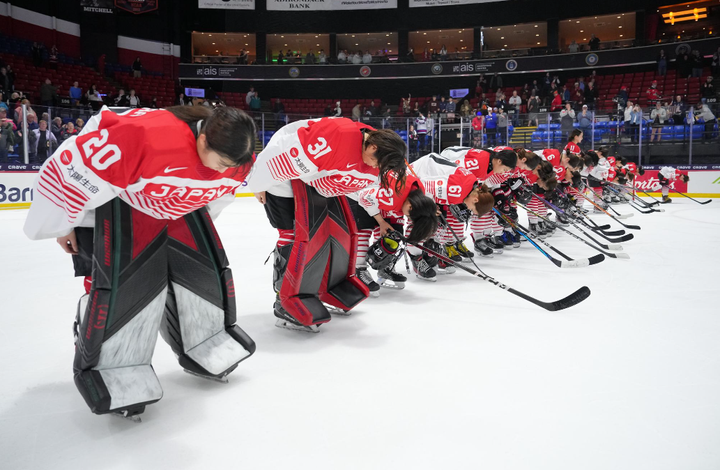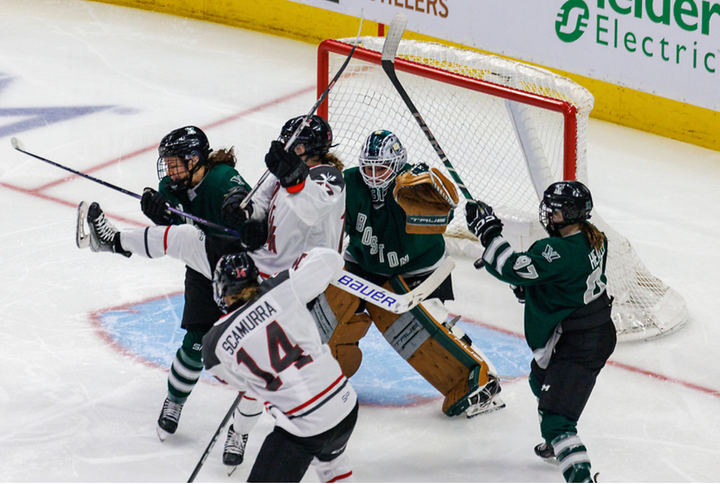2021 Worlds: Team Canada preview
Canada looks to take home gold for the first time in nine years
As one of women’s hockey’s perennial powerhouses, Canada will be battling hard for gold at the 2021 Women’s World Championship. Their 23-player roster features, at a glance, a strong mix of veteran scorers and high-energy forwards, an up-and-coming defensive core, and very good goaltending chops.
This is an important Worlds for Canada in a few different ways. The hosts are looking to win their first gold medal at a World Championship since 2012. This is also Canada’s first time hosting Worlds since 2016 in Kamloops, British Columbia, and it comes at long last: they were supposed to host in Nova Scotia in April 2020, then in May 2021. The tournament will finally (?) be played in Calgary beginning next Friday.
2019 Worlds
100 years ago, when the sport of international women’s hockey was last played, Canada had their worst finish ever at the World Championships, taking home bronze. They were upset by the Finns, who were on home soil in Espoo and had far and away their best performance ever, on the flip side.
One thing to note from the last time out: center depth was something of an issue, particularly when Blayre Turnbull went down with an injury in the semifinal against Finland. That isn’t likely to be the case this time (or at all during centralization). The Canadians have a swath of natural centers on their roster and will almost certainly be playing some of them at wing to get them into the offensive rotation.
At any rate, their finish should be a major motivator for the Canadians this time around. It’s also the first major action of the Olympic year, making for a comparatively intense start to centralization. While it’s still very early on in the season and this squad will have some kinks to work out, Canada has every reason to show up in top form.
Roster
Forwards: Victoria Bach, Emily Clark, Mélodie Daoust, Sarah Fillier, Brianne Jenner, Rebecca Johnston, Emma Maltais, Sarah Nurse, Kristin O’Neill, Marie-Philip Poulin, Jamie Lee Rattray, Jill Saulnier, Natalie Spooner, Laura Stacey, Blayre Turnbull
Defenders: Erin Ambrose, Ashton Bell, Jaime Bourbonnais, Renata Fast, Jocelyne Larocque, Ella Shelton, Claire Thompson
Goalies: Kristen Campbell, Ann-Renée Desbiens, Emerance Maschmeyer
Head Coach: Troy Ryan
Introducing Team Canada! 🇨🇦
— Hockey Canada (@HockeyCanada) August 5, 2021
2⃣5⃣ players will wear the 🍁 and represent Canada at the 2021 IIHF Women’s World Championship in Calgary.
ROSTER ➡️ https://t.co/6EQV29hIfe pic.twitter.com/Z7vWlGXWj0
Story to Watch
I think the collective performance of the defense is going to be a storyline to follow this tournament. I wrote earlier in a breakdown of Canada’s centralization roster that this is a largely unproven group that nevertheless has a really high ceiling. We’ll see how close they can come to peaking in their first major action of the year.
Team Canada took Micah Zandee-Hart and Jaime Bourbonnais to Espoo in 2019 as collegians, though neither played a featured role for the squad at that point. Bourbonnais is back now for this tournament with a bit more seasoning, and Ella Shelton, Claire Thompson, and Ashton Bell will all be playing at the World Championship for the very first time.
One immediate test for the team will be filling the skates of Laura Fortino, who previously held claim to “No. 1 D” honors, particularly in 2019. She was Canada’s time on ice leader at the 2019 World Championship, and was the only player to play more than 20 minutes in every game through the semifinals. The point of this is not to harp on about a player left off the centralization roster, but instead to point out that there is a legitimate role left open that needs to be filled—and probably very quickly, if Canada has gold medal hopes.
Key Player(s)
With the amount of star talent on this roster, it’s tough to narrow it down to just one player to watch. After two years without a World Championship it feels like a good time to remind everyone that Marie-Philip Poulin is still excellent and dynamic as ever. She was far and away the best player on the ice at the PWHPA’s Secret Dream Gap Tour showcase in Calgary.
Erin Ambrose is also worthy of a mention on the defensive side of things. With so many up-and-coming players on the blue line, she’s an important piece of the puzzle as a seasoned vet. Her spot on the national team hasn’t always been a sure bet—she was cut from the centralization roster in 2017—but her overall game has improved a ton over the last cycle. Her vision and offensive sense has always been top-notch, and she’s made great strides in terms of her mobility. This tournament is a great test to see what she can do as a go-to two-way D for the team.
Key Youngster
Fillier is a two-point-per-game player in the NCAA who still has two years of eligibility left. This will be her first appearance at a World Championship, but she’s been a mainstay on the national team for a few years now, so she’s far from your typical rookie. Her style of play checks all the boxes of what we’ve come to expect from a Team Canada forward: she brings it every shift, she’s tenacious on the forecheck, and she can dominate in tight areas.
She is one of those natural centers on the roster, but she’s recently spent time on the wing with the national team. Canada has put her with Poulin and Daoust at various camps, which is a line designed specifically for my enjoyment and the detriment of every opposing D.
There are a few potential roles Fillier can fill for Team Canada, from my standpoint. She can add an extra offensive punch if she continues lining up on the wing in the top-six, or she can add some great depth if she slots in as a center on a lower line. This is part of what makes her so valuable: her tremendous offensive skillset and versatility give Canada a few different options to work with.





Comments ()